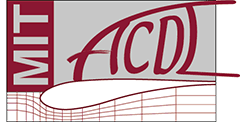In both modern and classical physics, certain coupled dynamical systems exhibit a great variety of self-excited vibrations, both useful and destructive manners. In particular, ocean and wind environments are full of such self-excited vibrations, which constitute an interesting problem for the numerical modeling and can have a significant impact on the dynamical performance of systems in offshore, aerospace, power transmission, energy extraction, and many more. During self-excitation, phase between motion and driving force adjusts such a way that the coupled system experiences a negative damping that provides the energy supply into the self-sustained vibrations. Vortex-induced vibrations and fluttering flags are two common examples of this kind of self-excited and self-limiting phenomena. Oscillating flexible cylinders or flapping of flexible flags in a freestream can form a great variety of vortex wake modes that can have a profound role on the performance of structural dynamics and flow behavior. In the case of vortex-induced vibration, the frequency of unstable wake system approaches that of the oscillating bluff body that results into the oscillating lift force with increasing amplitude of motion through a nonlinear resonance shift. For sufficiently large amplitude, the wake is significantly perturbed and forced to move through the strong inertial coupling at the natural resonating frequency of the oscillating structure. We review recent numerical developments in this interesting topic, and we draw some parallels between vortex-induced vibrations and flapping dynamics as a dynamic equilibrium between the instability of the flow and the synchronized response of structures. We shed light on the effects of the wake interference, mass ratio, Reynolds number, reduced velocity, and proximity effects with the upstream body and the stationary wall. Finally, we provide some review of challenging problems that keep intense interest on the topic from the offshore and aerospace industry standpoints.
BIO:
Rajeev K. Jaiman is currently an Assistant Professor in the Department of Mechanical Engineering at the National University of Singapore (NUS). Prior to joining NUS in 2012, Dr. Jaiman was a Director of CFD Development at Altair Engineering, Inc., Mountain View, California. He was responsible for the development of commercial finite element based CFD solver, AcuSolve. His contributions on coupled fluid-structure interaction modeling have become known as a standard for an excellence in both industry and academia. Prior to Altair, he was a Lead CFD Developer at ACUSIM Software, Inc from 2007-2010. The technologies that Dr. Jaiman has developed are being used in wind turbine, offshore oil/gas, nuclear reactors, automotive and aerospace industries. Dr. Jaiman earned his Bachelor of Technology degree in Aerospace Engineering from the Indian Institute of Technology, Mumbai. Dr. Jaiman received his master's and doctorate degrees in Aerospace Engineering from the University of Illinois at Urbana-Champaign. In 2005, he was awarded by the Strehlow Memorial “Outstanding Researcher” recognition. In 2002 and 2004, he was nominated as fellow of Computational Science and Engineering (CSE) department.

